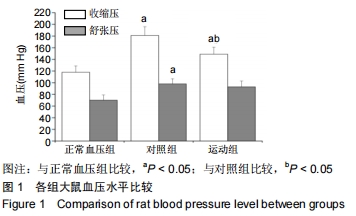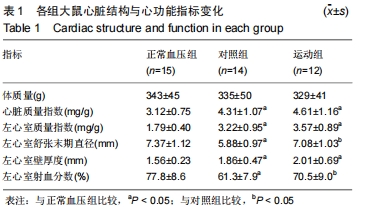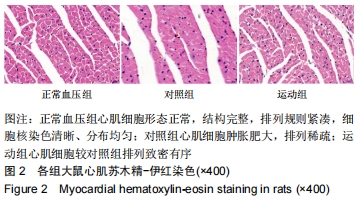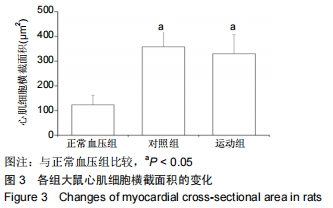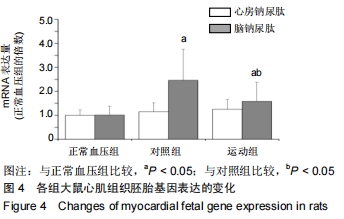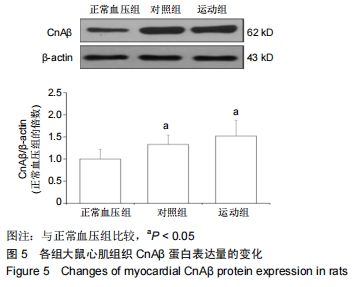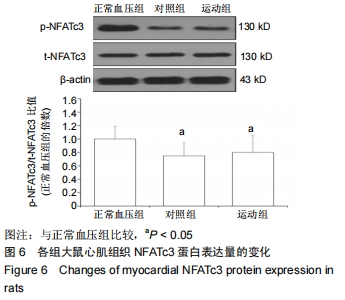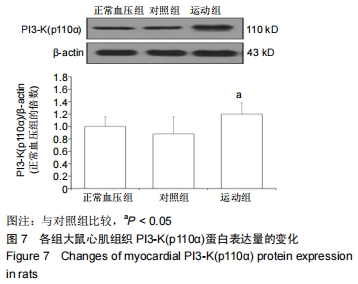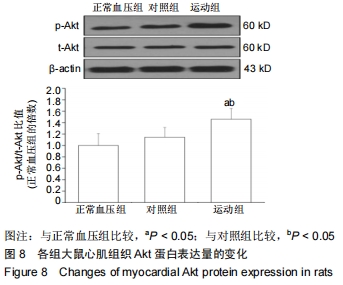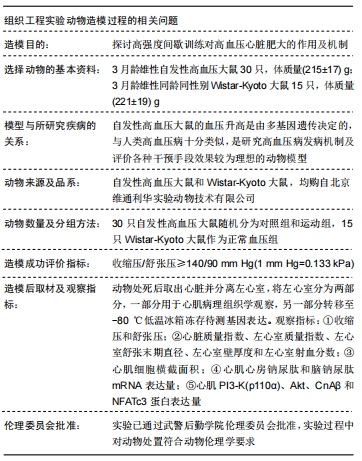[1]SHENASA M, SHENASA H. Hypertension, left ventricular hypertrophy, and sudden cardiac death. Int J Cardiol. 2017; 237:60-63.
[2]BESSEM B, DE BRUIJN MC, NIEUWLAND W, et al. The electrocardiographic manifestations of athlete's heart and their association with exercise exposure. Eur J Sport Sci. 2018;18(4):587-593.
[3]NAKAMURA M, SADOSHIMA J. Mechanisms of physiological and pathological cardiac hypertrophy. Nat Rev Cardiol. 2018; 15(7):387-407.
[4]SHARMAN JE, LA GERCHE A, COOMBES JS. Exercise and cardiovascular risk in patients with hypertension. Am J Hypertens. 2015;28(2):147-158.
[5]JACOBS RA, FLÜCK D, BONNE TC, et al. Improvements in exercise performance with high-intensity interval training coincide with an increase in skeletal muscle mitochondrial content and function. J Appl Physiol (1985). 2013;115(6): 785-793.
[6]CHRISTENSEN PM, KRUSTRUP P, GUNNARSSON TP, et al. VO2 kinetics and performance in soccer players after intense training and inactivity. Med Sci Sports Exerc. 2011;43(9): 1716-1724.
[7]LITTLE JP, GILLEN JB, PERCIVAL ME, et al. Low-volume high-intensity interval training reduces hyperglycemia and increases muscle mitochondrial capacity in patients with type 2 diabetes. J Appl Physiol (1985). 2011;111(6):1554-1560.
[8]CIOLAC EG. High-intensity interval training and hypertension: maximizing the benefits of exercise? Am J Cardiovasc Dis. 2012;2(2):102-110.
[9]HUSSAIN SR, MACALUSO A, PEARSON SJ. High-intensity interval training versus moderate-intensity continuous training in the prevention/management of cardiovascular disease. Cardiol Rev. 2016;24(6):273-281.
[10]MOUSAVI N, CZARNECKI A, KUMAR K, et al. Relation of biomarkers and cardiac magnetic resonance imaging after marathon running. Am J Cardiol. 2009;103(10):1467-1472.
[11]BENITO B, GAY-JORDI G, SERRANO-MOLLAR A, et al. Cardiac arrhythmogenic remodeling in a rat model of long-term intensive exercise training. Circulation. 2011;123(1): 13-22.
[12]DA COSTA REBELO RM, SCHRECKENBERG R, SCHLÜTER KD. Adverse cardiac remodelling in spontaneously hypertensive rats: acceleration by high aerobic exercise intensity. J Physiol. 2012;590(21):5389-5400.
[13]范朋琦,秦永生,彭朋.不同运动方式对自发性高血压大鼠心脏重塑和运动能力的影响[J].现代预防医学,2018,45(23): 4341-4345.
[14]孟宪欣,管泽毅,葛吉生,等.间歇运动干预自发性高血压大鼠病理性心脏肥大:运动强度与健康效应的关系[J].体育科学,2019, 39(6): 73-82.
[15]黄凯,彭朋,李晓霞.长期自主跑轮运动对心肌梗死大鼠心肌重塑的影响[J].武警后勤学院学报(医学版),2015,24(5): 337-341.
[16]ROSSONI LV, OLIVEIRA RA, CAFFARO RR, et al. Cardiac benefits of exercise training in aging spontaneously hypertensive rats. J Hypertens. 2011;29(12):2349-2358.
[17]甄洁,李晓霞. TGF-β/TIMP-1/MMP-1信号通路在有氧运动改善心衰大鼠心脏重塑中的作用[J].中国康复医学杂志,2015, 30(12): 1212-1216.
[18]施曼莉,李晓霞.有氧运动对慢性心力衰竭大鼠病理性心脏肥大的影响[J].体育学刊,2015,22(3):127-134.
[19]LOVIC D, NARAYAN P, PITTARAS A, et al. Left ventricular hypertrophy in athletes and hypertensive patients. J Clin Hypertens (Greenwich). 2017;19(4):413-417.
[20]DZUDIE A, DZEKEM BS, KENGNE AP. NT-pro BNP and plasma-soluble ST2 as promising biomarkers for hypertension, hypertensive heart disease and heart failure in sub-Saharan Africa. Cardiovasc J Afr. 2017;28(6):406-407.
[21]DIRKX E, DA COSTA MARTINS PA, DE WINDT LJ. Regulation of fetal gene expression in heart failure. Biochim Biophys Acta. 2013;1832(12):2414-2424.
[22]YASUE H, YOSHIMURA M, SUMIDA H, et al. Localization and mechanism of secretion of B-type natriuretic peptide in comparison with those of A-type natriuretic peptide in normal subjects and patients with heart failure. Circulation.1994; 90(1):195-203.
[23]YEVES AM, BURGOS JI, MEDINA AJ, et al. Cardioprotective role of IGF-1 in the hypertrophied myocardium of the spontaneously hypertensive rats: A key effect on NHE-1 activity. Acta Physiol (Oxf). 2018;224(2):e13092.
[24]MCMULLEN JR, AMIRAHMADI F, WOODCOCK EA, et al. Protective effects of exercise and phosphoinositide 3-kinase(p110alpha) signaling in dilated and hypertrophic cardiomyopathy. Proc Natl Acad Sci U S A. 2007;104(2): 612-617.
[25]SAGARA S, OSANAI T, ITOH T, et al. Overexpression of coupling factor 6 attenuates exercise-induced physiological cardiac hypertrophy by inhibiting PI3K/Akt signaling in mice. J Hypertens. 2012;30(4):778-786.
[26]MIYACHI M, YAZAWA H, FURUKAWA M, et al. Exercise training alters left ventricular geometry and attenuates heart failure in dahl salt-sensitive hypertensive rats. Hypertension. 2009;53(4):701-707.
[27]GARCIARENA CD, PINILLA OA, NOLLY MB, et al. Endurance training in the spontaneously hypertensive rat: conversion of pathological into physiological cardiac hypertrophy. Hypertension. 2009;53(4):708-714.
[28]贾祁,李丼,石丼君,等. CaN/NFAT信号通路在有氧运动改善高血压心肌肥大中的作用[J].体育科学,2018,38(12):45-52.
[29]NICHOLSON CK, LAMBERT JP, CHOW CW, et al. Chronic exercise downregulates myocardial myoglobin and attenuates nitrite reductase capacity during ischemia-reperfusion. J Mol Cell Cardiol. 2013;64:1-10.
[30]KONHILAS JP, WATSON PA, MAASS A, et al. Exercise can prevent and reverse the severity of hypertrophic cardiomyopathy. Circ Res. 2006;98(4):540-548.
[31]OLIVEIRA RS, FERREIRA JC, GOMES ER, et al. Cardiac anti-remodelling effect of aerobic training is associated with a reduction in the calcineurin/NFAT signalling pathway in heart failure mice. J Physiol. 2009;587(Pt 15):3899-3910.
[32]廖兴林,常芸,高晓嶙,等.力竭运动后不同时相大鼠心肌CnAβ的变化[J].中国运动医学杂志,2009,28(4):388-390.
[33]王增喜,李洁,王悦.高强度间歇训练对大鼠心肌线粒体呼吸链复合体活性的影响[J].中国运动医学杂志,2018,37(4):315-322.
[34]HOLLOWAY TM, BLOEMBERG D, DA SILVA ML, et al. High intensity interval and endurance training have opposing effects on markers of heart failure and cardiac remodeling in hypertensive rats. PLoS One. 2015;10(3):e0121138.
[35]BOUTCHER YN, BOUTCHER SH. Exercise intensity and hypertension: what's new? J Hum Hypertens. 2017;31(3): 157-164.
[36]THOMPSON PD, FRANKLIN BA, BALADY GJ, et al. Exercise and acute cardiovascular events placing the risks into perspective: a scientific statement from the American Heart Association Council on Nutrition, Physical Activity, and Metabolism and the Council on Clinical Cardiology. Circulation. 2007;115(17):2358-2368.
[37]GILLEN JB, GIBALA MJ. Is high-intensity interval training a time-efficient exercise strategy to improve health and fitness? Appl Physiol Nutr Metab. 2014;39(3):409-412.
|

